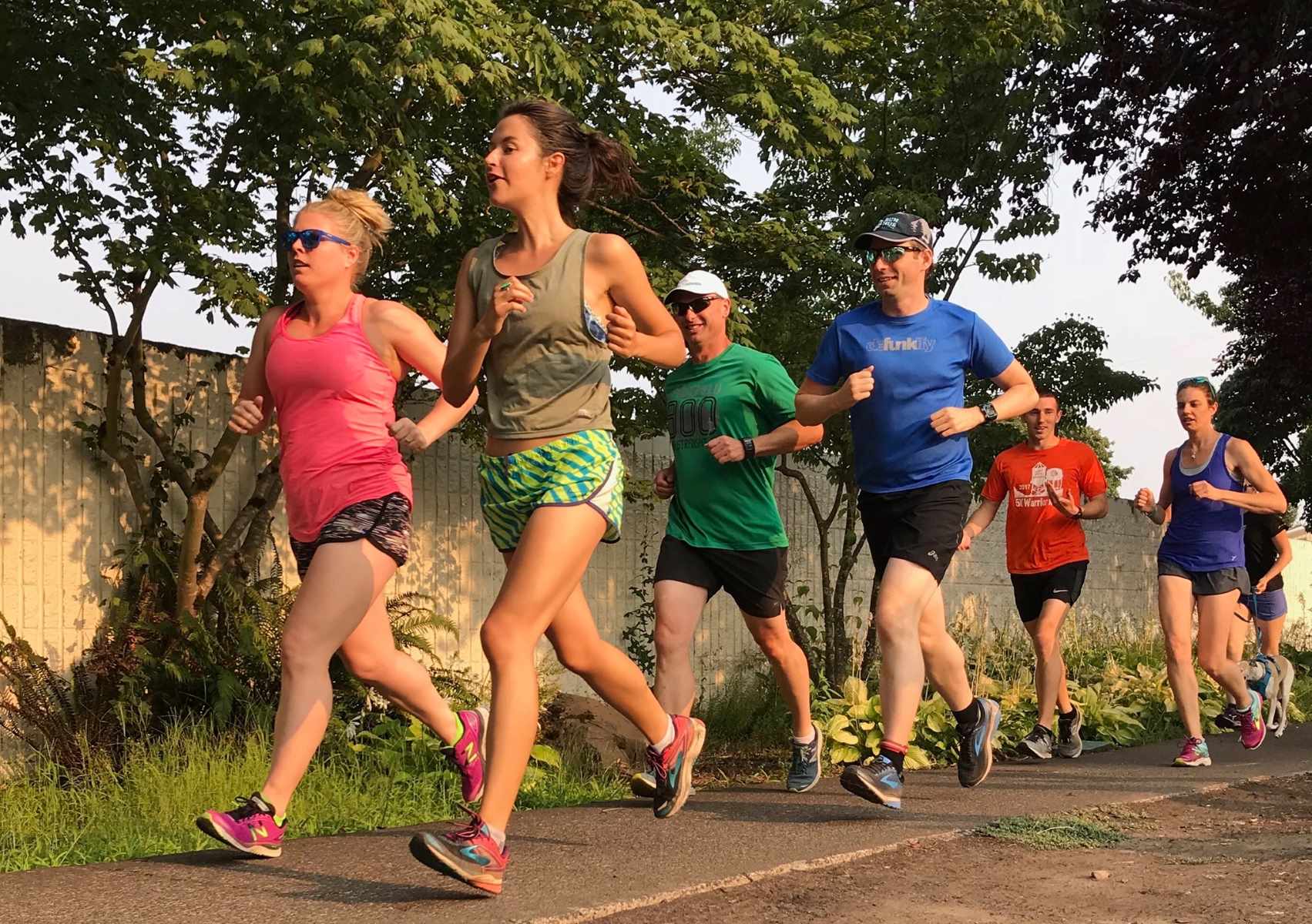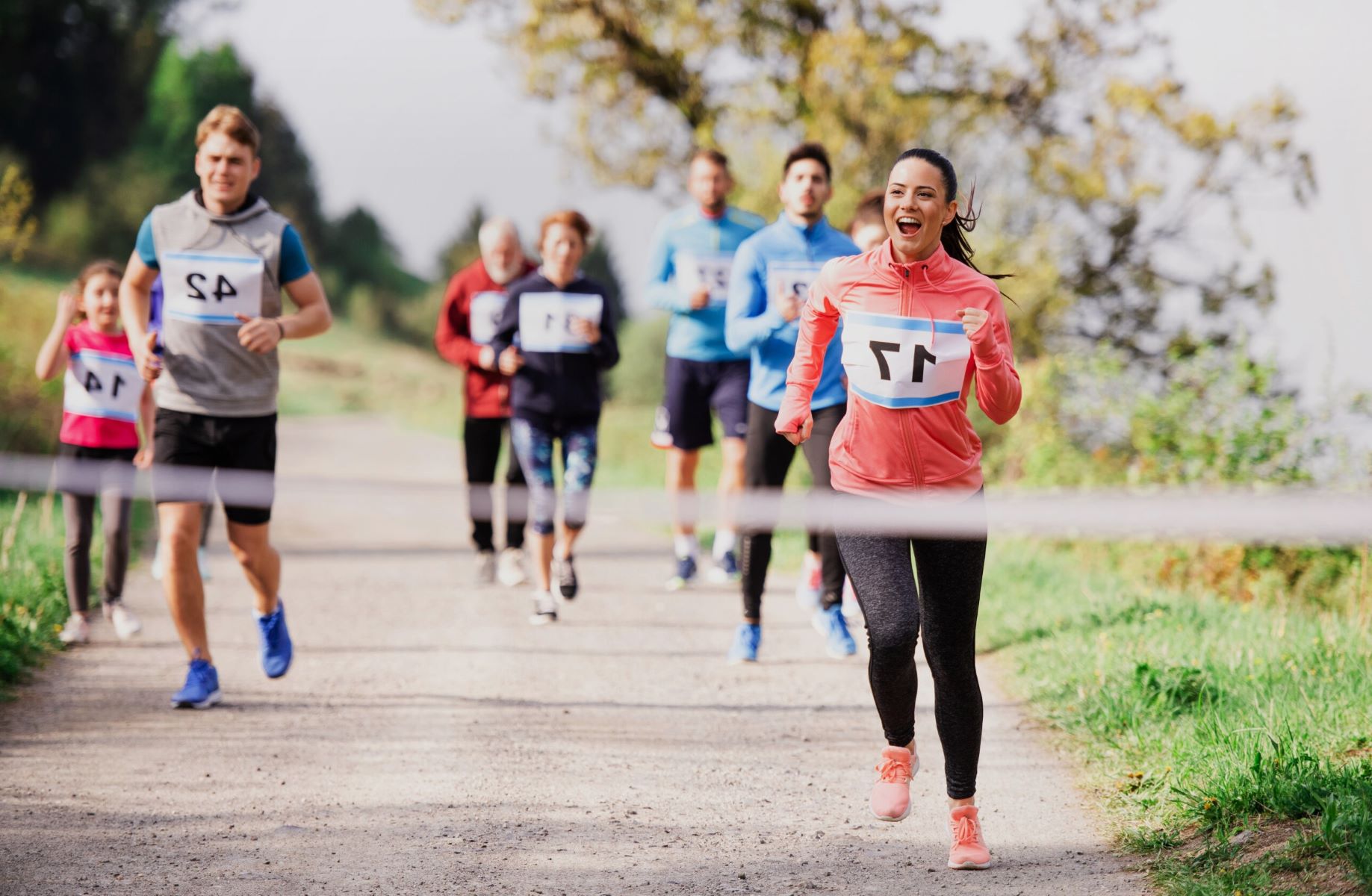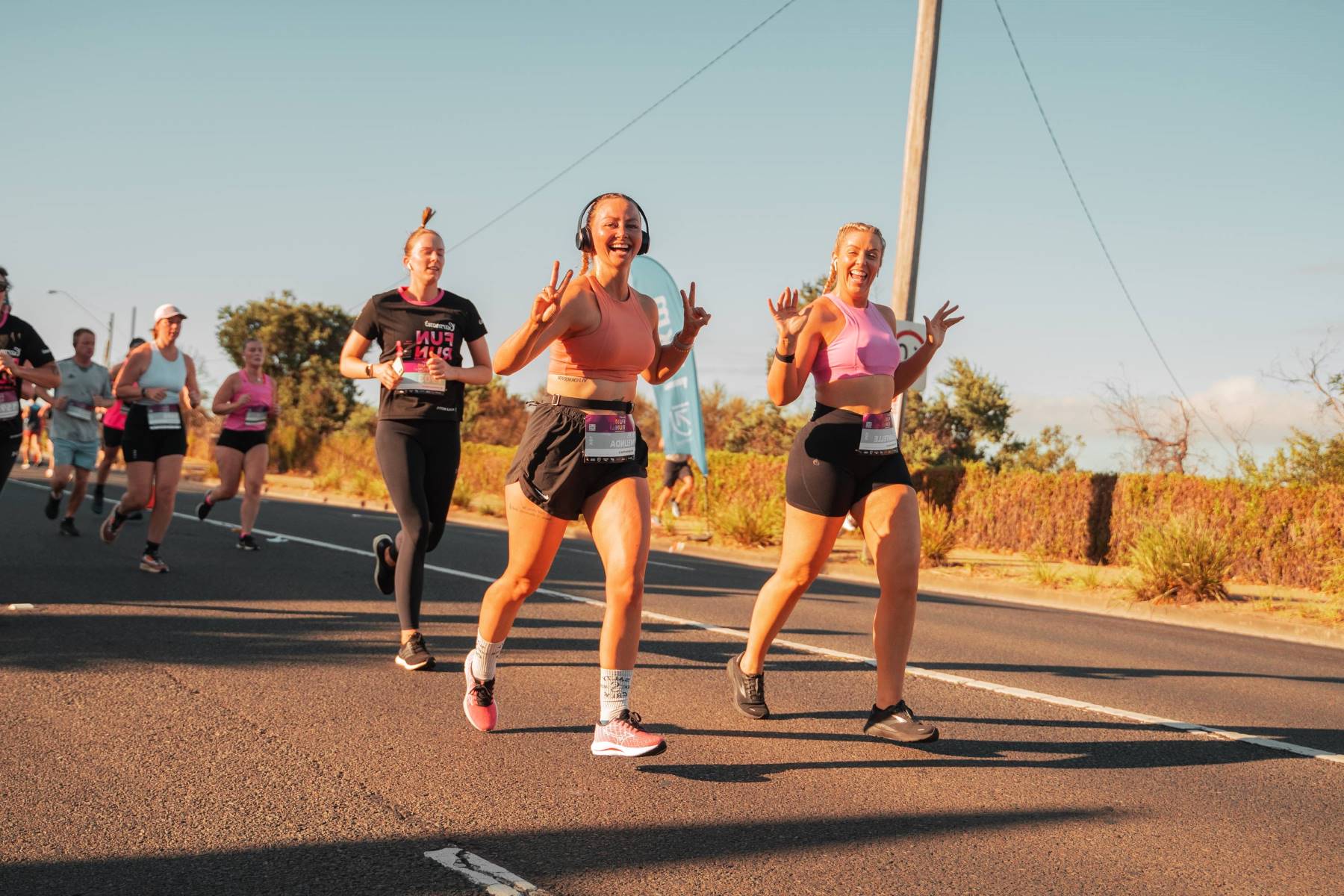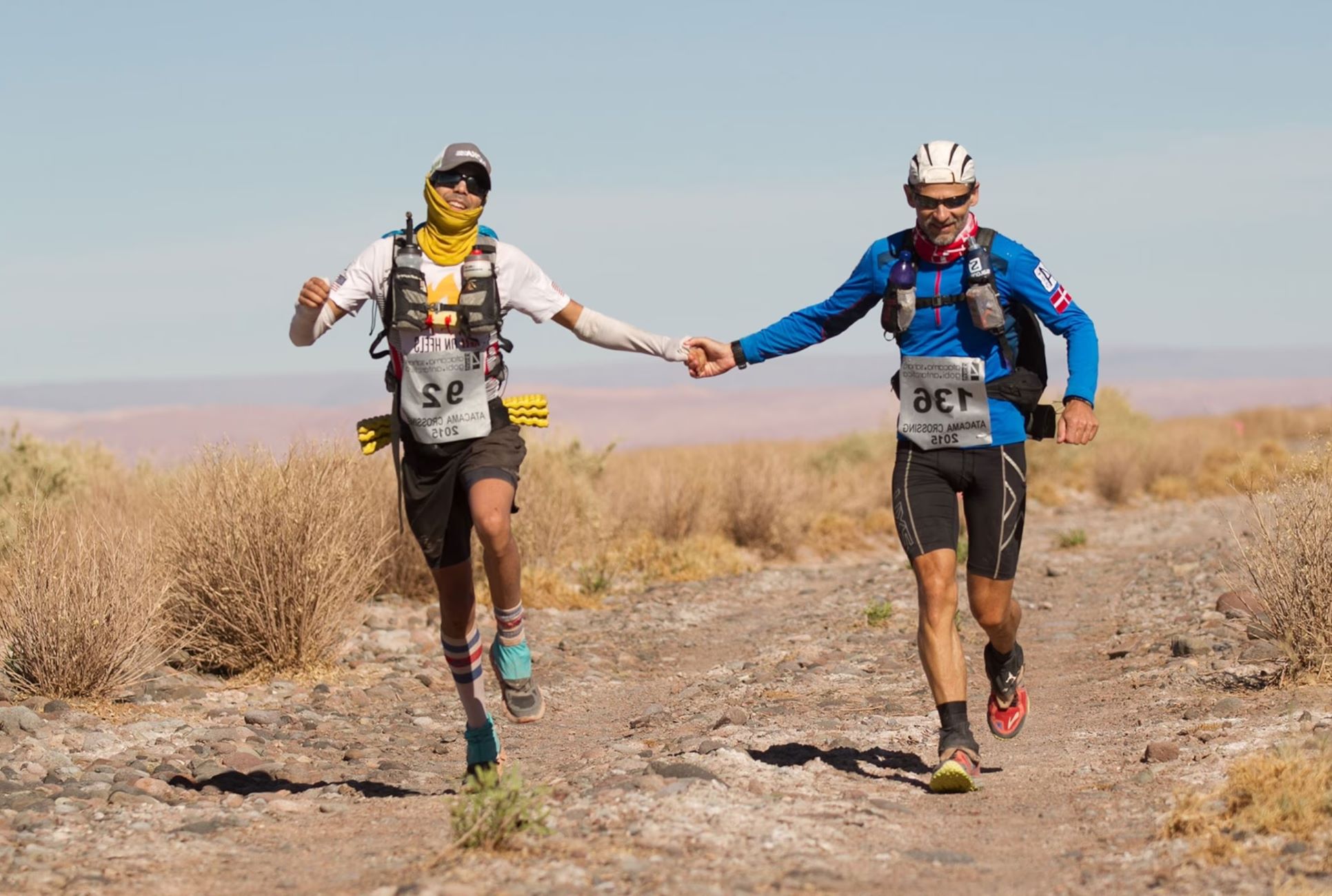Home>Community & Lifestyle>Essential Information On Community Running: 5 Key Points


Community & Lifestyle
Essential Information On Community Running: 5 Key Points
Published: February 20, 2024
Discover the essential information on community running and lifestyle with these 5 key points. Enhance your community engagement and healthy lifestyle today!
(Many of the links in this article redirect to a specific reviewed product. Your purchase of these products through affiliate links helps to generate commission for Therunningadvisor.com, at no extra cost. Learn more)
Table of Contents
Introduction
Community running is more than just a form of exercise; it's a vibrant and dynamic social activity that brings people together through a shared passion for running. Whether you're a seasoned marathoner or a novice jogger, joining a community running group can offer a myriad of benefits, from improving your physical health to fostering meaningful connections with like-minded individuals. In this article, we'll delve into the essential aspects of community running, exploring the advantages, tips for finding the right running group, safety considerations, and the impact of building a supportive running community.
Running is a universal activity that transcends age, gender, and background, making it an inclusive and accessible form of exercise. The sense of camaraderie and mutual encouragement that permeates community running groups creates an environment where individuals can push their limits, celebrate achievements, and find motivation to overcome challenges. As we navigate through the various facets of community running, it's important to recognize the profound impact it can have on both physical and mental well-being.
Community running is not just about clocking miles; it's about embracing a lifestyle that promotes holistic health and wellness. By immersing oneself in the running community, individuals can experience a sense of belonging and purpose, which can significantly enhance their overall quality of life. Whether it's the exhilaration of crossing the finish line at a local race or the simple joy of sharing a morning run with friends, community running offers a plethora of enriching experiences that extend far beyond the physical act of running.
As we embark on this exploration of community running, it's crucial to approach it with an open mind and a willingness to embrace the diverse and enriching experiences it offers. From the bustling streets of urban running clubs to the serene trails of rural running communities, the world of community running is as diverse as the individuals who partake in it. So, lace up your running shoes and get ready to discover the transformative power of community running.
Benefits of Community Running
Participating in community running offers a multitude of benefits that extend beyond physical fitness. Here are some of the key advantages:
-
Motivation and Accountability: Joining a community running group provides a built-in support system that can significantly boost motivation. The camaraderie and encouragement from fellow runners can inspire individuals to stay committed to their running routine, even on days when motivation wanes. The shared goals and collective spirit within the group create a sense of accountability, fostering a consistent and dedicated approach to running.
-
Social Connection: Community running fosters social connections and a sense of belonging. It provides an avenue for individuals to meet like-minded people who share a passion for running. Whether it's engaging in post-run conversations, celebrating milestones together, or simply sharing running tips, the social aspect of community running enhances overall well-being and combats feelings of isolation.
-
Diverse Perspectives and Learning Opportunities: Running with a community exposes individuals to diverse perspectives and experiences. It offers a platform for sharing knowledge, techniques, and insights into the world of running. Whether it's learning about proper form, discovering new training methods, or gaining insights into local running routes, the collective wisdom within a running group can be invaluable for personal growth and development as a runner.
-
Enhanced Performance and Progress: The collective energy and competitive spirit within a running community can elevate individual performance. Engaging in group runs, interval training, or friendly competitions can push individuals to surpass their perceived limits and achieve new milestones. The shared pursuit of improvement and progress creates an environment conducive to personal growth and enhanced performance.
-
Mental Well-being: Community running has a profound impact on mental well-being. The endorphins released during physical activity, combined with the social interactions and support from fellow runners, contribute to reduced stress levels and an overall positive mindset. The sense of accomplishment and camaraderie derived from community running can alleviate anxiety, boost self-esteem, and promote mental resilience.
In essence, community running transcends the physical act of running; it encompasses a holistic approach to well-being by nurturing social connections, fostering personal growth, and promoting a positive mindset. The benefits of community running extend far beyond the miles covered, enriching the lives of individuals and strengthening the fabric of the running community.
Finding the Right Running Group
Finding the right running group is a pivotal step in embarking on a fulfilling and rewarding community running journey. The ideal running group should align with your goals, preferences, and level of experience, fostering an environment that nurtures growth, camaraderie, and support. Here are essential considerations to guide you in finding the perfect running group:
1. Assess Your Goals and Preferences
Before delving into the search for a running group, take a moment to reflect on your running goals and preferences. Are you seeking a competitive environment to enhance performance, or do you prefer a more casual and social running group? Consider factors such as preferred running distances, pace, and the frequency of group runs. Understanding your personal objectives will guide you in selecting a running group that resonates with your aspirations.
2. Research Local Running Communities
Explore the diverse array of local running communities, clubs, and groups in your area. This can encompass urban running clubs, trail running groups, and organizations catering to specific demographics, such as women's running groups or beginner-friendly programs. Utilize online resources, social media platforms, and community bulletin boards to identify running groups that align with your interests and logistical convenience.
3. Attend Group Runs and Events
Immerse yourself in the running community by attending group runs and events hosted by various running groups. This hands-on approach allows you to experience the dynamics of different running groups firsthand. Pay attention to the group's atmosphere, the level of inclusivity, and the overall camaraderie among members. Engaging in trial runs with different groups can provide valuable insights into the culture and ethos of each running community.
4. Seek Compatibility and Support
When evaluating potential running groups, prioritize compatibility and support. Look for a group where you feel comfortable, motivated, and welcomed. The collective energy and encouragement within the group should resonate with your personal ethos and running philosophy. Additionally, consider the availability of mentorship, coaching, and resources that can contribute to your growth as a runner.
5. Embrace Diversity and Inclusivity
A thriving running group embraces diversity and inclusivity, welcoming individuals from various backgrounds, skill levels, and ages. The richness of perspectives and experiences within a diverse running community can enhance the overall running experience and foster a sense of unity. Seek a running group that celebrates inclusivity and promotes a supportive environment for all members.
6. Evaluate Organizational Values
Consider the values and mission of the running group or club. Assess whether the organizational ethos aligns with your personal principles and aspirations. Look for groups that prioritize community engagement, volunteerism, and initiatives that contribute to the broader running community and local neighborhoods.
By carefully evaluating these factors and immersing yourself in the local running community, you can identify a running group that resonates with your individuality and aspirations. The right running group will not only elevate your running experience but also cultivate enduring friendships, personal growth, and a profound sense of belonging within the vibrant tapestry of the running community.
Safety Tips for Community Running
Ensuring safety is paramount when engaging in community running activities. By prioritizing safety measures, individuals can mitigate potential risks and fully enjoy the enriching experience of running within a community. Here are essential safety tips to uphold during community running endeavors:
-
Visibility and Reflective Gear: Opt for brightly colored and reflective clothing, especially when running during low-light conditions. Visibility is crucial for both urban and trail running, as it enhances awareness among fellow runners, cyclists, and motorists. Wearing reflective gear and accessories significantly reduces the risk of accidents and enhances overall safety.
-
Stay Aware of Surroundings: Maintain a heightened awareness of your surroundings while running in a community setting. Be mindful of traffic, pedestrians, and potential obstacles along the running route. Utilize designated running paths and sidewalks whenever possible, and exercise caution when crossing intersections or navigating shared pathways.
-
Buddy System and Communication: Whenever feasible, run with a companion or within a group. The buddy system enhances safety by providing mutual support and assistance in case of emergencies. Additionally, carry a fully charged mobile phone and inform a trusted individual about your running route and estimated return time. Effective communication and preparedness are vital for ensuring prompt assistance if needed.
-
Hydration and Nutrition: Prioritize hydration and proper nutrition before, during, and after community runs. Staying adequately hydrated and fueling your body with essential nutrients is crucial for sustaining energy levels and promoting overall well-being. Carry a water bottle or utilize hydration packs during longer runs, and be mindful of consuming balanced meals to support your running endeavors.
-
Weather Awareness: Stay informed about weather conditions and forecasts before embarking on a community run. Extreme temperatures, thunderstorms, or adverse weather patterns can pose significant risks to runners. Adjust your running plans accordingly, and be prepared with appropriate attire and gear to mitigate the impact of inclement weather.
-
First Aid and Emergency Preparedness: Equip yourself with basic first aid supplies, such as adhesive bandages, antiseptic wipes, and a compact first aid kit. Familiarize yourself with essential first aid techniques and procedures, and be prepared to provide assistance to fellow runners in case of minor injuries or medical emergencies. Additionally, carry identification and relevant medical information in case of unforeseen circumstances.
-
Respect Personal Limits and Listen to Your Body: Pay attention to your body's signals and respect your personal limits during community running activities. Avoid pushing yourself beyond your capabilities, especially if you are feeling fatigued or experiencing discomfort. Prioritize rest and recovery, and seek medical attention if you encounter persistent or severe physical distress.
By embracing these safety tips and integrating them into your community running routine, you can cultivate a secure and enjoyable running experience. Upholding safety measures not only safeguards individual well-being but also contributes to the collective harmony and resilience of the vibrant community running culture.
Building a Supportive Running Community
Building a supportive running community is the cornerstone of fostering a nurturing and inclusive environment that empowers individuals to thrive as runners and as part of a collective whole. The essence of a supportive running community transcends the mere act of running; it encompasses a culture of encouragement, empathy, and mutual respect that enriches the lives of its members. Here are essential elements that contribute to the cultivation of a supportive running community:
1. Encouragement and Mentorship
A supportive running community thrives on the ethos of encouragement and mentorship. Seasoned runners willingly share their knowledge, experiences, and insights with novice members, fostering a culture of continuous learning and growth. The exchange of encouragement and mentorship creates a nurturing environment where individuals feel empowered to overcome challenges and strive for personal improvement.
2. Inclusivity and Diversity
Embracing inclusivity and diversity is fundamental to building a supportive running community. By welcoming individuals from diverse backgrounds, skill levels, and ages, the running community becomes a tapestry of varied perspectives and experiences. This inclusivity fosters a sense of unity and mutual understanding, transcending barriers and creating a space where every member feels valued and respected.
3. Collective Celebrations and Milestones
A supportive running community celebrates the achievements and milestones of its members, regardless of the scale of the accomplishment. Whether it's completing a first 5K race, achieving a personal best in a marathon, or overcoming a personal obstacle, the collective celebration of these milestones reinforces a culture of support and camaraderie. The shared joy and encouragement amplify the sense of belonging within the running community.
4. Volunteerism and Community Engagement
Engaging in volunteer activities and community initiatives strengthens the fabric of a supportive running community. Whether it's organizing local races, participating in charity runs, or contributing to environmental conservation efforts, the collective involvement in community-centric endeavors fosters a spirit of altruism and solidarity. These activities not only benefit the broader community but also reinforce the bonds among running community members.
5. Empathy and Support Networks
A supportive running community prioritizes empathy and the establishment of robust support networks. Members extend genuine care and understanding to one another, offering solace during challenging times and celebrating the triumphs of fellow runners. This network of support creates a safety net that bolsters individual resilience and fosters a sense of belonging within the running community.
6. Cultivating a Culture of Gratitude
Expressing gratitude and appreciation within the running community cultivates a culture of positivity and mutual respect. Recognizing the contributions of volunteers, coaches, and fellow runners fosters a sense of interconnectedness and reinforces the ethos of support and gratitude. This culture of gratitude amplifies the collective spirit and strengthens the bonds within the running community.
In essence, building a supportive running community is a continuous journey that hinges on the collective efforts of its members. By nurturing an environment rooted in encouragement, inclusivity, celebration, volunteerism, empathy, and gratitude, the running community becomes a vibrant tapestry of shared experiences and mutual empowerment. Each member contributes to the mosaic of support and camaraderie, shaping a running community that transcends the boundaries of running itself, enriching the lives of all who are part of it.













